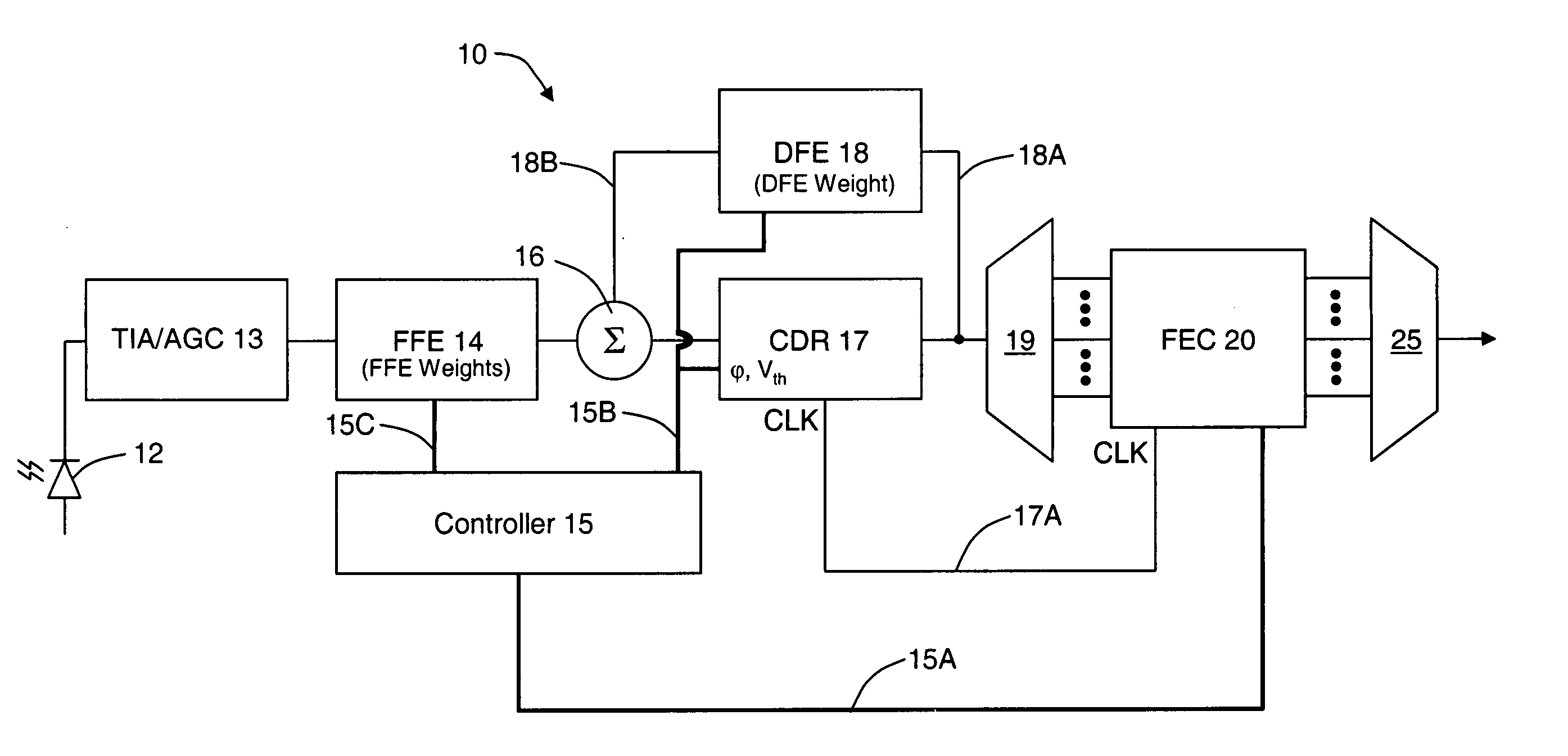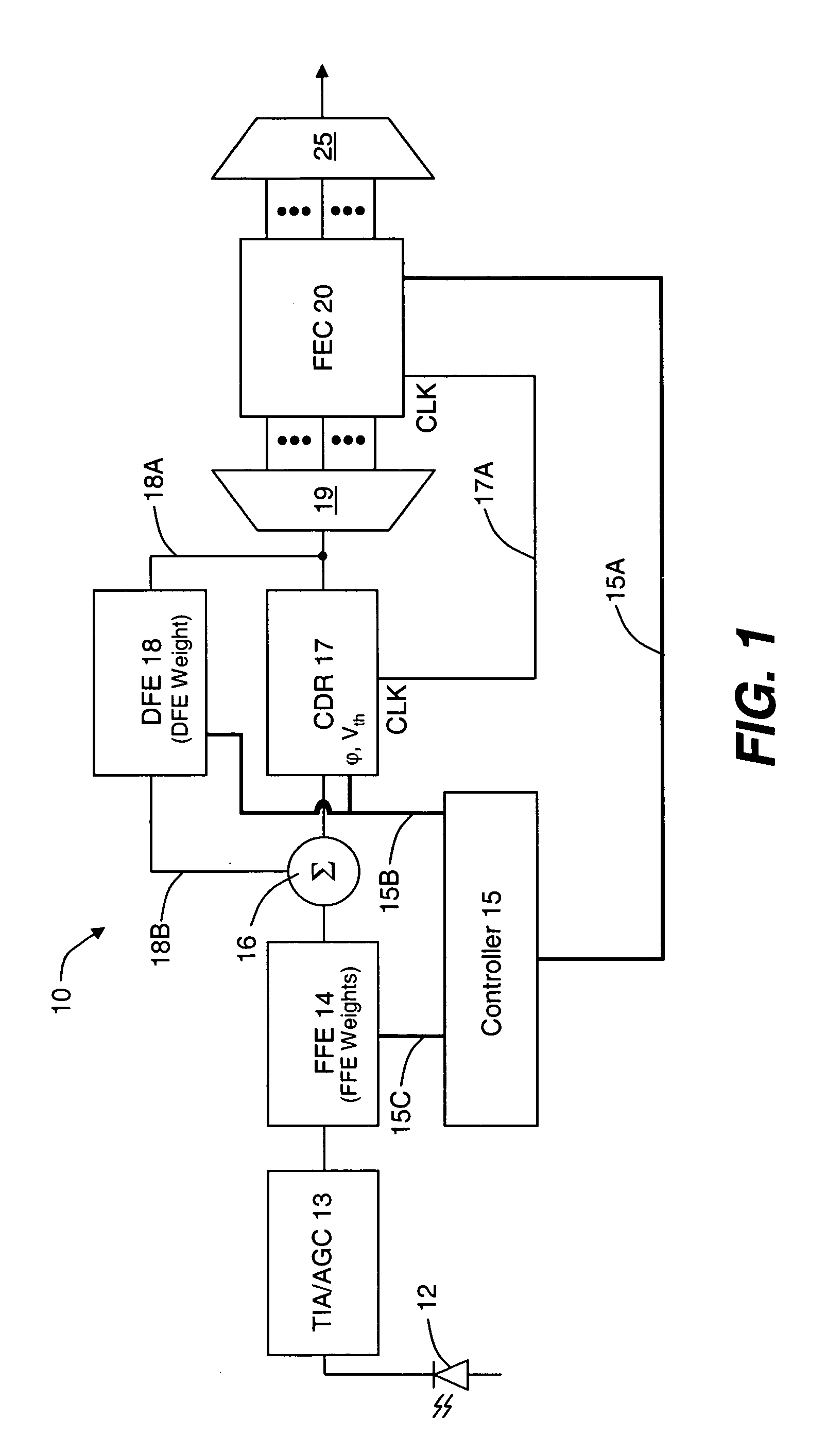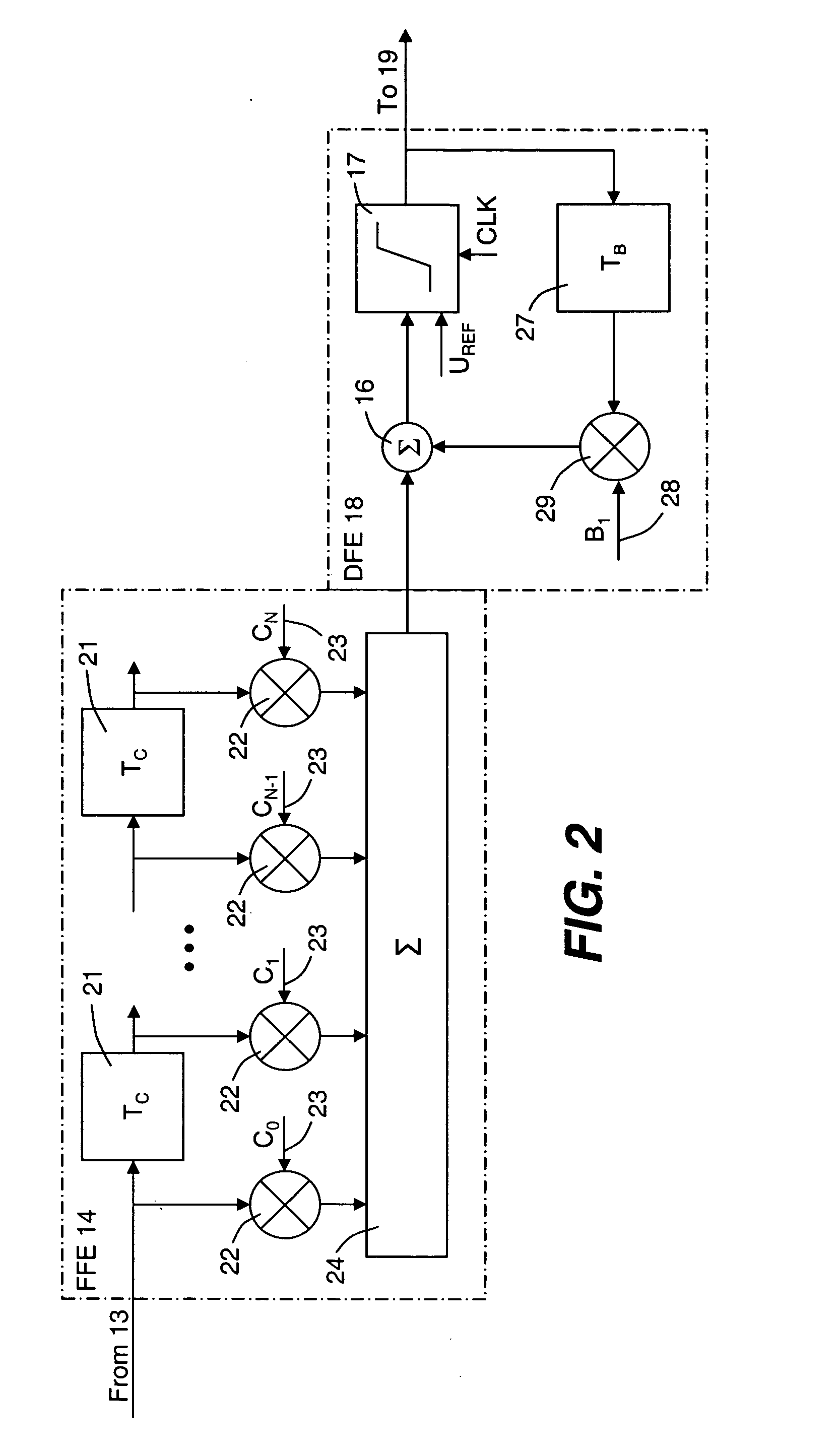Pattern-dependent error counts for use in correcting operational parameters in an optical receiver
a technology of optical receivers and error counts, applied in the field of forward error correction systems, can solve problems such as data errors in data signal recovery at optical receivers, and achieve the effect of accurate approach to adjustment of eye pattern threshold and sampling tim
- Summary
- Abstract
- Description
- Claims
- Application Information
AI Technical Summary
Benefits of technology
Problems solved by technology
Method used
Image
Examples
Embodiment Construction
[0043] Reference is now made to FIG. 1 which illustrates a block diagram of an optical receiver 10 that may be utilized in connection with this invention. The receiver 10 has a signal path that includes photodetector 12 where the optical signal is converted into a current signal, the amplitude of which is representative of the optical pulses of the incoming optical channel signal such as in the case of amplitude modulated channel signals. This current signal is then converted into a voltage signal at transimpedance amplifier 13. TIA / AGC 13 also includes an automatic gain control (ADC) circuit to amplify the signal. The signal is then provided to analog transversal filter (TF) or linear feed forward equalizer (FFE) 14, as known in the art and as illustrated in more detail in FIG. 2. FFE 14 provides for correction of transmission impairments to the channel signal, particularly group velocity dispersion (GVD) of the transmitted signal. At the input of FFE 14, the electrical signal is d...
PUM
 Login to View More
Login to View More Abstract
Description
Claims
Application Information
 Login to View More
Login to View More - R&D
- Intellectual Property
- Life Sciences
- Materials
- Tech Scout
- Unparalleled Data Quality
- Higher Quality Content
- 60% Fewer Hallucinations
Browse by: Latest US Patents, China's latest patents, Technical Efficacy Thesaurus, Application Domain, Technology Topic, Popular Technical Reports.
© 2025 PatSnap. All rights reserved.Legal|Privacy policy|Modern Slavery Act Transparency Statement|Sitemap|About US| Contact US: help@patsnap.com



